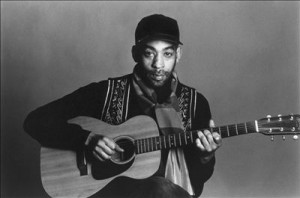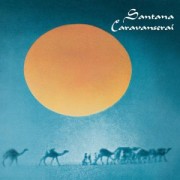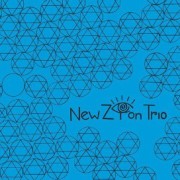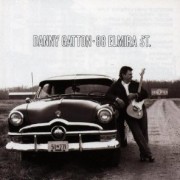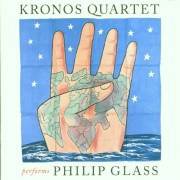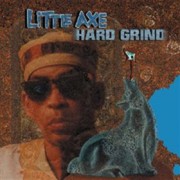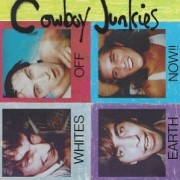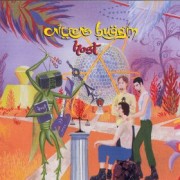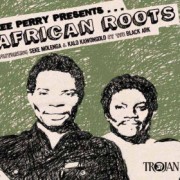30. Santana: Caravanserai
Abraxas gets most of the recognition, even though Santana III is better. (The less said about Supernatural, the better.) Yet not enough people name-check Caravanserai, which is a shame since it’s not only Santana’s best album, it’s one of the great documents of a great decade. If you’ve heard their big hits on the radio (and who hasn’t?) it’s familiar yet also elusive. There is an unforced far-off vibe the band taps into, and from the first cricket chirps to the last frantic arpeggios, the listener is definitely in another place altogether. The playing throughout is so obviously in the service of a singular and uncompromised vision, it still sounds primitive and futuristic all at the same time.
29. Eyvind Kang: Theater of Mineral Nades
Eyvind Kang inhabits other worlds so that the rest of us don’t have to.
There are many ways to explain Eyvind Kang, but for the uninitiated, it may be helpful to describe him an artist who is inspired by and incorporates other times and foreign places, always interpreting history and humanity with the curiosity of an explorer and the delight of a devoted scholar. He manages to make strange and exquisite music, at once embracing improvisation yet always guided by central themes and feelings.
Theater of Mineral Nades manages to be all things at once: a history-of-the-universe as sonic experiment. In an ideal world Kang would be, if not a household name, an artist properly appreciated by a curious and discerning majority that did not depend upon network television to tell them whom they should idolize. No matter. By continuing to depict forgotten as well as imagined worlds, Eyvind Kang manages to tell us new things about the one in which we dwell.
28. New Zion Trio: Fight Against Babylon
As a player equally comfortable behind a piano or an organ (as well as keyboards of any kind), Jamie Saft has delivered convincing performances as an acoustic player as well as one who happily plugs in. At times sounding like Klezmer meets King Tubby, this joint is heavy without being dark, and ever-so-slightly unsettling. Saft achieves the improbable: a radical deconstruction and re-imagining of the classic Dub it up blacker than Dread aesthetic perfected by Lee “Scratch” Perry in the mid-to-late ‘70s.
Capable of seemingly anything, Saft shrewdly utilizes a less-is-more approach to create a music that no one else could have conceived. He boasts the full range of his influences and ability, summoning sounds and feelings from multiple genres. The results are strikingly original and may inspire you to dig up some dub classics from your closet, or listen to contemporary jazz with reawakened ears. They should also remind you that while Saft has never before done anything quite like this, Fight Against Babylon is an obvious and welcome continuation of the distinctive and unclassifiable work he has been doing for many years now.
27. Danny Gatton: 88 Elmira Street
The best guitarist too many people are unaware of, Danny Gatton blended unparalleled musical chops with a seemingly all-encompassing range (You think I’m kidding you? I’m not kidding you. Check this and this and especially this.) From blues to folk to jazz (his own trademarked “redneck jazz” is brilliantly self-deprecating nod to his considerable proficiency) to spirited and original takes on rock/pop standards, Gatton is an American icon. This album is an obvious and easy way to get hooked on a player who is never less than interesting and consistently capable of making your heart stop with one lick. Speaking of heart, Gatton’s heart was like his ability: possibly too big for his own good. Impossible to pigeonhole (and therefore successfully market), Gatton knew he was great, but our world is often unkind or at best indifferent to real genius. He took his own life in 1993, one of the more intolerable tragedies in a profession full of them.
26. Kronos Quartet: Performs Philip Glass
How to get one’s ears around this contemporary master, equal parts prolific and peripatetic? This is an ideal point of entry, courtesy of some of his finest compositions, performed to perfection by the ever-reliable Kronos Quartet. Many of Glass’s stylistic quirks and affects are on display, including his looping use of repeated themes: at his best Glass disorients, circles back and ultimately comforts. Celebrated and/or derided for his so-called minimalist style (a lazy critical crutch if there ever was one), there are moments of intensity here—particularly on “String Quartet No. 3 (Mishima)” that unnerve before finally allowing release. A cathartic, emotional listen every time.
25. Little Axe: Hard Grind
Folks hearing Hard Grind might understandably say, “Hey, Moby already did this!” Check yourself before you wreck yourself: Little Axe did it first, and much more convincingly, on The Wolf That House Built (1995!!). Not to hate on old blues songs sampled over electronica dance beats but…Moby is old blues songs sampled over electronica dance beats. (Also: Google Skip McDonald. He’s kind of a big deal.)
Hard Grind is from the underground, where so many of the strange and interesting things occur. This is a surreal, always satisfying trip through a sonic funhouse where blues strains back to its African roots and rock stretches past the Internet, into the beyond. It is like a novel in many regards: a surface-level experience is enjoyable, but repeated exposure affords a more in-depth (and soulful) understanding of what the artist is after. It accrues value and import with time and, as anyone knows, these types of artifacts come along seldom enough that they should be celebrated.
24. Cowboy Junkies: Whites Off Earth Now!!
Whites Off Earth Now! is a brilliantly tongue-in-cheek reference to the fact that a group of young Caucasians (from Canada no less!) made an album largely comprised of covers of old African-American blues legends such as Lightnin’ Hopkins, Robert Johnson, John Lee Hooker and Bukka White. The arrangements are stripped down and unpolished, but sound like what they in fact are: live recordings. The true ear-opener of this band is Margo Timmins, who supplies a gracefully dangerous female voice to songs originally sung by gravelly-voiced hombres. Her sparse, but affecting delivery on veritable American treasures such as “Baby Please Don’t Go” (which, unlike Van Morrison’s well-known, up-tempo rockabilly treatment is slowed down to a brooding, almost lugubrious pace), “I’ll Never Get Out Of These Blues Alive”, and “Me and the Devil” are remarkable.
Two particular highlights: an astounding take on Bruce Springsteen’s “State Trooper”—a stark, somber, uncoverable song. Where Springsteen’s version is sparse with just a haunting, distant vocal and acoustic guitar, the CJ’s create musical tension that veritably sweats danger and foreboding. The album closes with a treatment of “Crossroads” that is so restrained and reticent it makes much of the rest of the album seem festive, if that’s possible.
23. Critters Buggin’: Host
Skerik (née Eric Walton) is like a Zelig of the musical antiestablishment, having associated and performed with an impressive roster of some of the more beloved avant-garde cult figures of our time, including Les Claypool, Charlie Hunter, Stanton Moore, and Bobby Previte. He is leader and mastermind of the ensembles Critters Buggin, Garage a Trois, and Skerik’s Syncopated Taint Septet.
Skerik is an architect of sounds: he constructs sonic scenes, and you are never quite sure how or what is making all of those strange yet exultant noises, but the results are always stylized and immediately recognizable. He operates mostly on tenor and baritone saxophone, but between the gadgets and effects it can sound like a small orchestra, albeit one emerging like steam from a sewage drain during a thunderstorm (in a good way).
22. Lee Perry: Lee Perry Presents…African Roots from the Black Ark Featuring Seke Molenga and Kalo Kawongolo
Be wary of anyone who tells you an album you’ve never heard is a masterpiece. This album is a masterpiece.
African Roots will grow on you, if you let it. It’s definitely filed under reggae, but the fact that Molenga and Kawongolo are African gives it a delightfully, if at first vaguely disorienting non-Western vibe. The vocals, with few exceptions, are not in English and this will oblige the listener to step outside preconceived notions and comfort zones. As a result, the focus inevitably is on the feeling being conjured, and this is most definitely a joyful noise. The album is a throwback in the sense that it demands to be absorbed as a whole, in a single setting, the way music works best when approached with the reverence it deserves. The songs employ double-tracked vocals and plenty of Lee Perry-produced echo and reverb, but the chants and repeated phrases are absolutely mesmerizing. Once you fall under its spell—and you will—it serves as a reminder that human beings are capable of extraordinary things: it’s righteous being humbled by art that makes you feel so good.
21. Fantomas: Fantomas
Mike Patton has made so much music that it really is incredible—and more than a little amusing—to remember that he was a straightforward rock deity, relatively speaking, circa 1998. And so, regardless of what anyone expected, or hoped for, it was less than likely that anyone could have anticipated what the eccentric frontman was cooking up in his laboratory. As soon became evident, Patton was headed in a very different direction indeed, inspiring him to recruit a supergroup of sorts to help him realize his vision. Calling on Trevor Dunn (good friend and bassist from Mr. Bungle), Buzz Osborne (guitarist and mastermind of the Melvins), and Dave Lombardi (the widely worshipped drummer from Slayer), Patton assembled what appeared, on paper, to be a metal lover’s wet dream. Amazingly, the collective turned out to surpass even the wildest hype, gelling to constitute a unified whole greater than the sum of its impressive parts.
A great deal of time and effort could be dedicated to debating what it all means, or how he did it (as ostensibly free-wheeling as the material may seem, Patton actually choreographed every second of it before the band ever got involved), and where this recording properly fits in an assessment of Patton’s evolution. In hindsight, Fantômas is very obviously a direction—wayward or ingenious, depending upon the listener—Patton wanted to head in, and he’s never backtracked, for better or for worse. To this listener, it represents the first day of the rest of Patton’s artistic life. Fantômas let him break with what he must have felt were the straightjacket-like conventions and expectations of the traditional rock route, and it’s almost like he had to invent his own language to give free expression to what was boiling around inside his mind.
